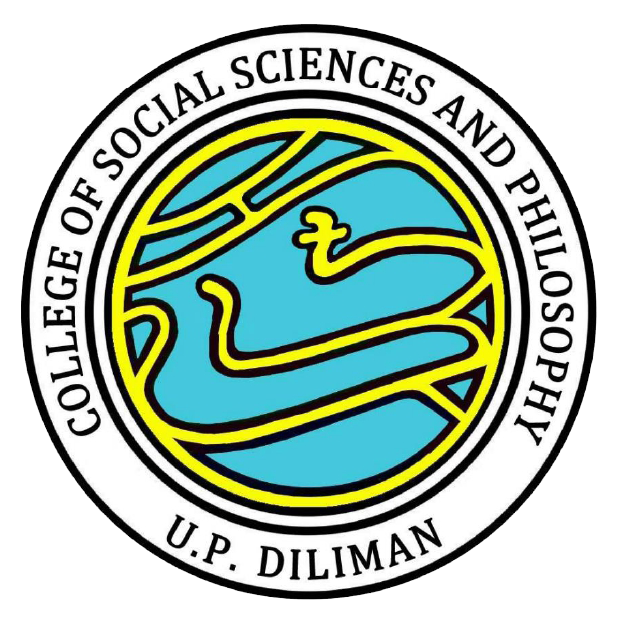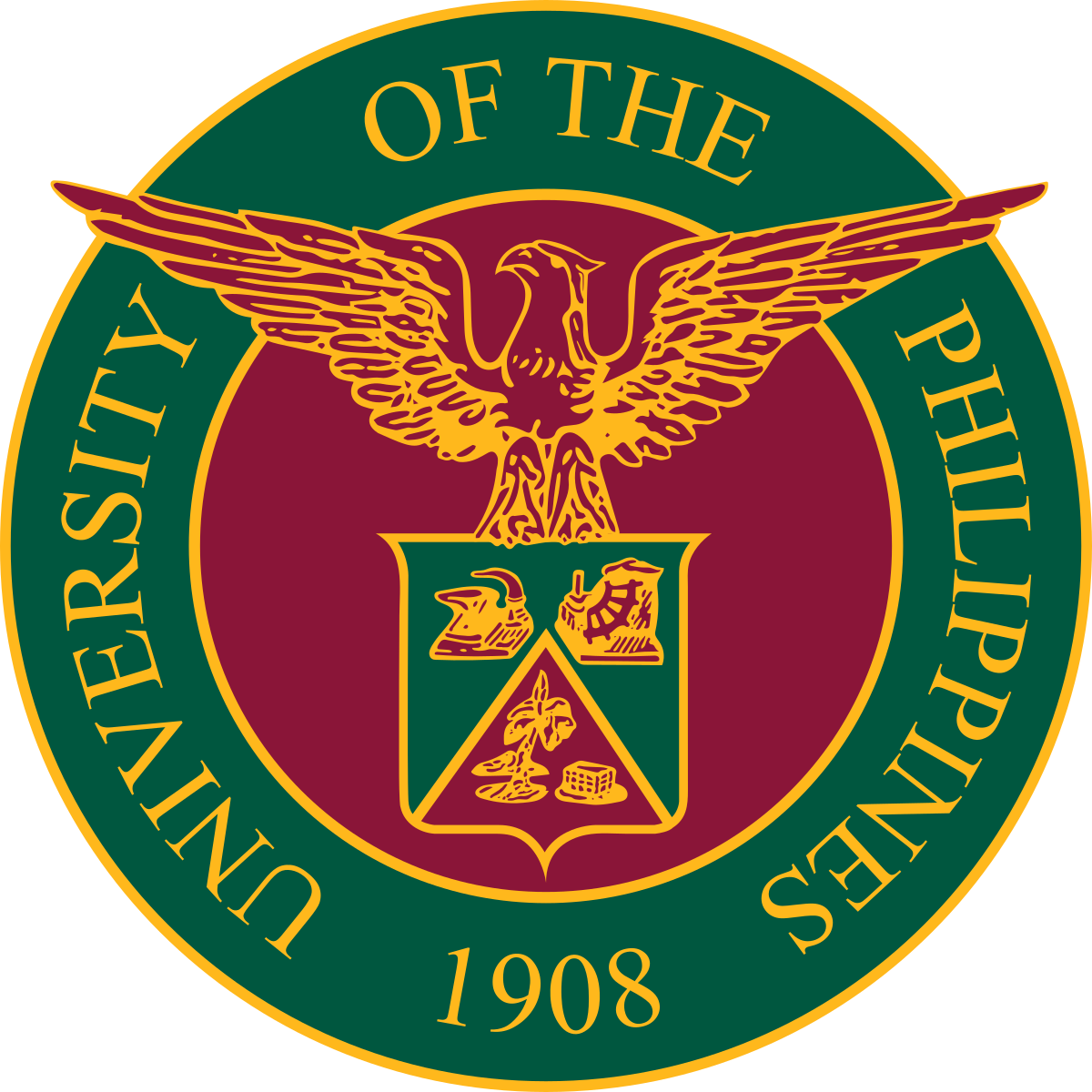Publications

AGOS: Currents of Faith in the Diocese of Kalookan
The cities of Caloocan, Malabon, and Navotas have been married, geographically, to major bodies of water. The Malabon-Navotas and Tullahan Rivers, the Dagat-dagatan swamps and inlets, and the vast fishponds along the coastline of Manila Bay have been important bloodlines not only in the socio-economic life of communities but also in the growth of the Catholic faith of the people. It is in this vignette that this book tells the stories of the Catholic parishes and communities of believers in the Diocese of Kalookan, presently composed of vicariates located in the three cities. This work chronicles the long and rich history of the Roman Catholic faith in the towns of Malabon, Navotas, and Caloocan. The growth and evolution of churches and communities of believers demonstrate the enduring legacies of faith and spirituality in the people of the Diocese in the past centuries.
This book has five chapters, each one chronicles the history of parishes and communities, illustrated through the metaphor of river flow and traversing the seas. The first chapter, Pagdaong, sets the tone for the enormous task of the community of Catholic faithful emanating from the commemoration of the 500th year of Christianity in the Philippines – the writing of parish histories. The second chapter, Paglalayag, narrates the establishment of the Diocese of Kalookan in 2003, the events that culminated in the creation of a new diocese out of the Kalookan-Malabon-Navotas (KalMaNa) District from the Archdiocese of Manila, and the seals and insignias that symbolize the diocese’s aspirations as a flourishing enclave of Christian believers in northeastern Metro Manila. The third one, Pagpapalaot, chronicles the historical development of each vicariate and parish in the Diocese. It provides accounts of the significant events that shaped the Church in the Diocese and portrays the story of churches that experienced changes and continuities in the decades and centuries of their existence. The fourth chapter, Pagdaloy – paints the rich history and culture of devotion in the diocese, focusing on select stories of select devotions to patrons and collective spiritual beliefs and practices. The last chapter, Pag-Ibayo, unfolds the present theological undercurrents of the Catholic faith and their implication to the Diocese’s priorities, and charts its future by looking at the efforts to expand its programs and projects to harness more faithful towards the Church of the People.
This book has five chapters, each one chronicles the history of parishes and communities, illustrated through the metaphor of river flow and traversing the seas. The first chapter, Pagdaong, sets the tone for the enormous task of the community of Catholic faithful emanating from the commemoration of the 500th year of Christianity in the Philippines – the writing of parish histories. The second chapter, Paglalayag, narrates the establishment of the Diocese of Kalookan in 2003, the events that culminated in the creation of a new diocese out of the Kalookan-Malabon-Navotas (KalMaNa) District from the Archdiocese of Manila, and the seals and insignias that symbolize the diocese’s aspirations as a flourishing enclave of Christian believers in northeastern Metro Manila. The third one, Pagpapalaot, chronicles the historical development of each vicariate and parish in the Diocese. It provides accounts of the significant events that shaped the Church in the Diocese and portrays the story of churches that experienced changes and continuities in the decades and centuries of their existence. The fourth chapter, Pagdaloy – paints the rich history and culture of devotion in the diocese, focusing on select stories of select devotions to patrons and collective spiritual beliefs and practices. The last chapter, Pag-Ibayo, unfolds the present theological undercurrents of the Catholic faith and their implication to the Diocese’s priorities, and charts its future by looking at the efforts to expand its programs and projects to harness more faithful towards the Church of the People.

Pioneering Women’s Health: University of the Philippines – Philippine General Hospital Department of Obstetrics and Gynecology, 1900s-Present.
In celebration of Women’s Month, Professor Ma. Mercedes G. Planta reflects on the fascinating history and evolution of women’s healthcare, focusing on the vital role of obstetrics and gynecology (OB-GYN). For many women, their OB-GYN is not only their primary physician but often a trusted medical partner throughout their lives.
The specialty of OB-GYN emerged in the twentieth century, merging the fields of obstetrics, which focuses on pregnancy and childbirth, and gynecology, which addresses broader aspects of female reproductive health. This integration reflects a holistic approach to women’s well-being and highlights the historical significance of these practices, dating back to early medical traditions.
From midwifery to modern-day obstetrics, the care of women has undergone transformative changes, empowering both women and medical professionals alike. As we honor women this month, Professor Planta celebrates the contributions and advancements made in the field of OB-GYN, highlighting its pivotal role in shaping women’s health across generations.
The specialty of OB-GYN emerged in the twentieth century, merging the fields of obstetrics, which focuses on pregnancy and childbirth, and gynecology, which addresses broader aspects of female reproductive health. This integration reflects a holistic approach to women’s well-being and highlights the historical significance of these practices, dating back to early medical traditions.
From midwifery to modern-day obstetrics, the care of women has undergone transformative changes, empowering both women and medical professionals alike. As we honor women this month, Professor Planta celebrates the contributions and advancements made in the field of OB-GYN, highlighting its pivotal role in shaping women’s health across generations.
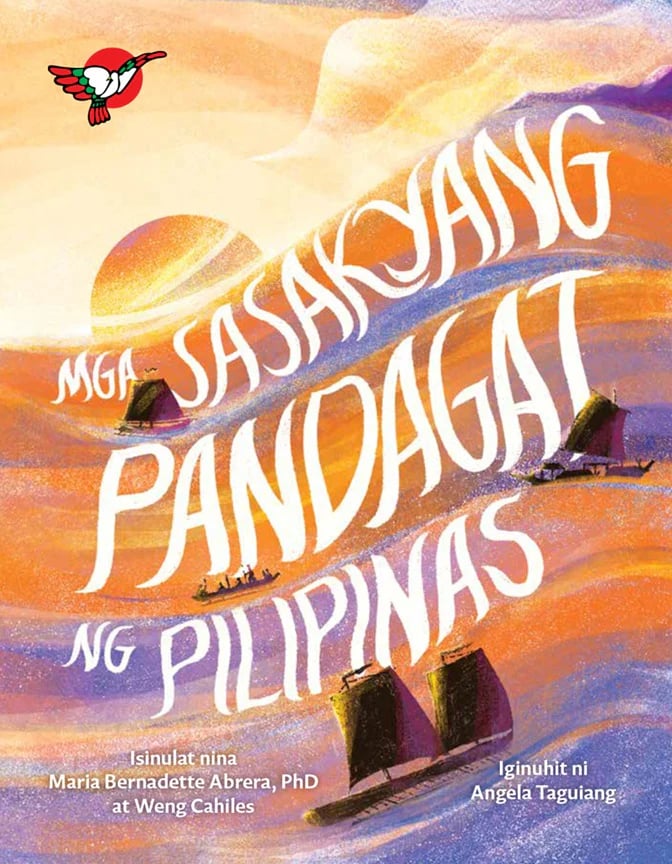
Mga Sasakyang Pandagat ng Pilipinas - Picture Book
Maria Bernadette L. Abrera, Ph.D.
Binubuo ang Pilipinas ng napakaraming islang malalaki at maliliit. Paano kaya naglakbay, nakipagkalakalan, at namuhay ang ating mga ninuno nang napapalibutan ng tubig? Halina't kilalanin ang iba't ibang sinaunang sasakyang pandagat na naglakbay sa ating karagatan.
The Philippines is made up of many islands, big and small. How did our ancestors travel, trade, and live surrounded by water? Come learn about the various ancient ships and boats that traversed our oceans.
ISBN: 9789715089906
Published: 2024
Language: Filipino (Tagalog)
Age Recommendation: 10+
32 pages | 150 grams | 7 by 9 inches
The Philippines is made up of many islands, big and small. How did our ancestors travel, trade, and live surrounded by water? Come learn about the various ancient ships and boats that traversed our oceans.
ISBN: 9789715089906
Published: 2024
Language: Filipino (Tagalog)
Age Recommendation: 10+
32 pages | 150 grams | 7 by 9 inches

Tahanan, Tanggulan, at TagpuanL Kasaysayang Pampook ng Bayan ng Looc
Umiinog ang pamagat ng aklat sa tatlong katagang pawang may kinalaman sa espesyal na papel ng looc bilang pook na naitampok sa iba’t ibang yugtong pangkasaysayan. Una, nagsilbi itong TAHANAN sa mga pangkat-etnolinggwistiko gaya ng mga Ati at Mangyan. Sila ay maituturing na “tumandok” (aborigines) ng isla ng Tablas subalit naging tampulan ng pang-aabuso at diskriminasyon. Ikalawa, nagsilbi itong TANGGULAN para sa mga migranteng Unhan Bisaya at Nayon Bisaya galing Panay na naghangad ng bagong kanlungan at nagpalaganap ng kanilang wika at kultura. Sa kasagsagan ng Digmaang Moro, nalikha at lumaganap ang Alamat ng mga “boyong” gaya nina Tamboro at Talabukon na masigasig na nagtanggol sa taumbayan laban sa mga umatakeng Moro mula timog. Ikatlo, nagsilbi itong TAGPUAN para sa mga migranteng Tagalog galing Luzon. May ambag sila sa pagtatayo ng bagong sentrong pamayanan (tinatawag ngayon na Poblacion) at pagpapalakas ng lokal na ekonomiya. Samakatuwid, ang pagkakatatag at pag-usbong ng Looc ay hindi lamang monopoly ng iisang pangkat. Produkto ito ng pagtutulungan ng iba’t ibang pangkat-etnolinggwistiko at inisyatiba ng mga lokal na lider pampulitika kasangkot ang taumbayan kung kaya patuloy itong bumabangon at namamayagpag sa kabila ng di-mabilang na mga hamong gawa ng tao at kalikasan. Kabilang dito ang kolonyalismong Espanyol, pag-aatakeng Moro, kolonyalismong Amerikano, mga kalamidad gaya ng bagyo, baha, at lindol, sunog, mga epikdemya gaya ng kolera at small pox, Okupasyong Hapon, Batas Militar, at iba pa.
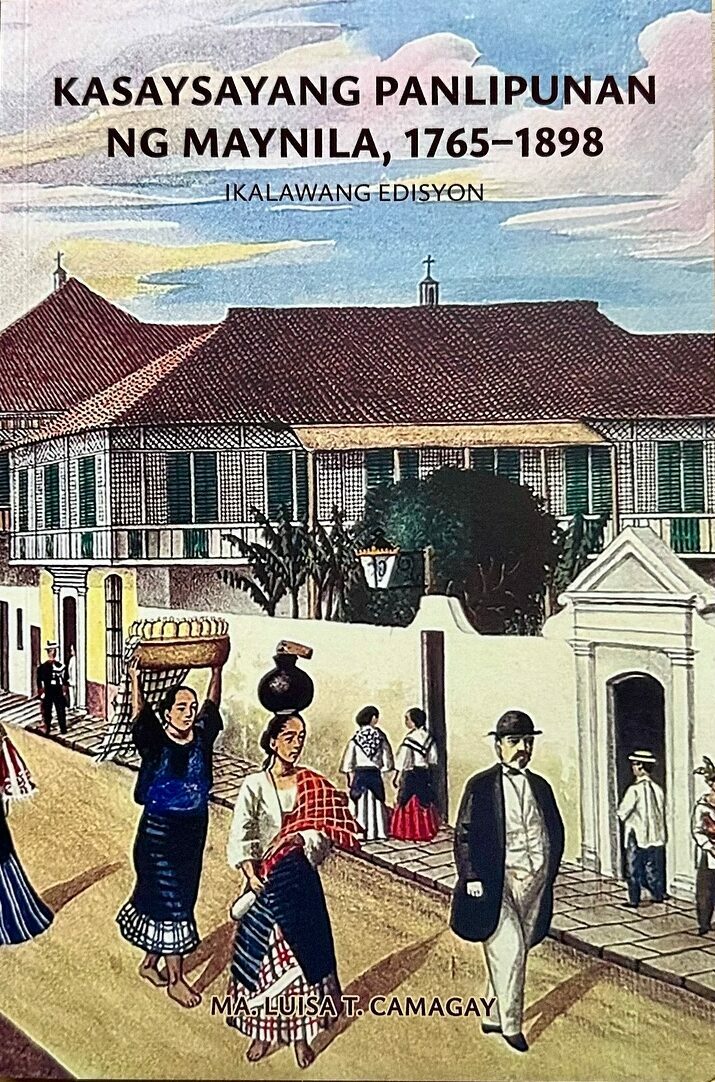
Kasaysayan Panlipunan ng Maynila, 1765-1898
“Naging isang mahalagang ikutang-pangyayari sa Pilipinas ang ika-labing siyam na dantaon. Marami itong nasaksihan sa larangang pulitikal, ekonomikal, panlipunan at kultural. Sa panahon na ito, nagbukas ang Pilipinas sa mundong pangkalakalan na nagbigay daan sa bagong produktong agricultural na hiling na mga banyagang bansa tulad na asukal, abaka, kape at ultimong bigas. Dahil dito ay nagbukas ng mga konsulado ang iba’t ibang bansa upang pangasiwaan ang kalakalan sa mga nasabing produkto. Naging saksi rin sa dantaong ito ang pagbisita ng mga banyaga na nag-ulat ng kanilang nakita sa Pilipinas. Utang natin sa mga ulat ng konsul at ang mga banyagang bisita ang mayaman na dokumentasyon hinggil sa Pilipinas noong ika-labing siyam na dantaon.
Madalas na nakakaligtaan ang pagtalakay sa dantaon na ito ang paglalarawan ng lipunan ng Maynila na kung tutuusin ang isang lipunan na binubuo ng iba’t ibang lahi. Nariyan ang Peninsulares (mga Espanyol, ang ipinanganak sa Iberian Peninsula), ang Insulares (mga Espanyol na ipinanganak sa Pilipinas) at binansagan na Filipino o Creoles, ang katutubo na binansagan na Indio, ang mestizo na madalas ay mestizo Tsino at ang mga purong Tsino. Idagdag pa natin ang mga banyaga – Europeo, Amerikano at iba pang Asyano. Sa madaling sabi, ang lipunan ng Maynila ay masasabing cosmopolitan at multi-racial.
Sa ganitong uri ng kaligiran, susuriin ang ugnayan na namagitan sa iba’t ibang grupong ito sa pang-araw-araw ng buhay. Aalamin kung anu-anong libangan ang namayani sa bawat lahi at ano naman ang tinangkilik ng lahat.
Bahagi rin ng aklat ang mga bagay na nagbigay ligalig sa lipunan ng Maynila: ang banta ng epidemic ng kolera, ng lindol at bagyo at ng krimen.”
Unang nilimbag ang aklat na ito noong 1992 at binigyan ng bagong bihis ngayong 2024 ng Pambansang Komisyong Pangkasaysayan ng Pilipinas. Si Dr. Ma. Luisa T. Camagay ay professor emeritus ng Departamento ng Kasaysayan, Kolehiyo ng Agham Panlipunan ng Unibersidad ng Pilipinas Diliman.
Madalas na nakakaligtaan ang pagtalakay sa dantaon na ito ang paglalarawan ng lipunan ng Maynila na kung tutuusin ang isang lipunan na binubuo ng iba’t ibang lahi. Nariyan ang Peninsulares (mga Espanyol, ang ipinanganak sa Iberian Peninsula), ang Insulares (mga Espanyol na ipinanganak sa Pilipinas) at binansagan na Filipino o Creoles, ang katutubo na binansagan na Indio, ang mestizo na madalas ay mestizo Tsino at ang mga purong Tsino. Idagdag pa natin ang mga banyaga – Europeo, Amerikano at iba pang Asyano. Sa madaling sabi, ang lipunan ng Maynila ay masasabing cosmopolitan at multi-racial.
Sa ganitong uri ng kaligiran, susuriin ang ugnayan na namagitan sa iba’t ibang grupong ito sa pang-araw-araw ng buhay. Aalamin kung anu-anong libangan ang namayani sa bawat lahi at ano naman ang tinangkilik ng lahat.
Bahagi rin ng aklat ang mga bagay na nagbigay ligalig sa lipunan ng Maynila: ang banta ng epidemic ng kolera, ng lindol at bagyo at ng krimen.”
Unang nilimbag ang aklat na ito noong 1992 at binigyan ng bagong bihis ngayong 2024 ng Pambansang Komisyong Pangkasaysayan ng Pilipinas. Si Dr. Ma. Luisa T. Camagay ay professor emeritus ng Departamento ng Kasaysayan, Kolehiyo ng Agham Panlipunan ng Unibersidad ng Pilipinas Diliman.
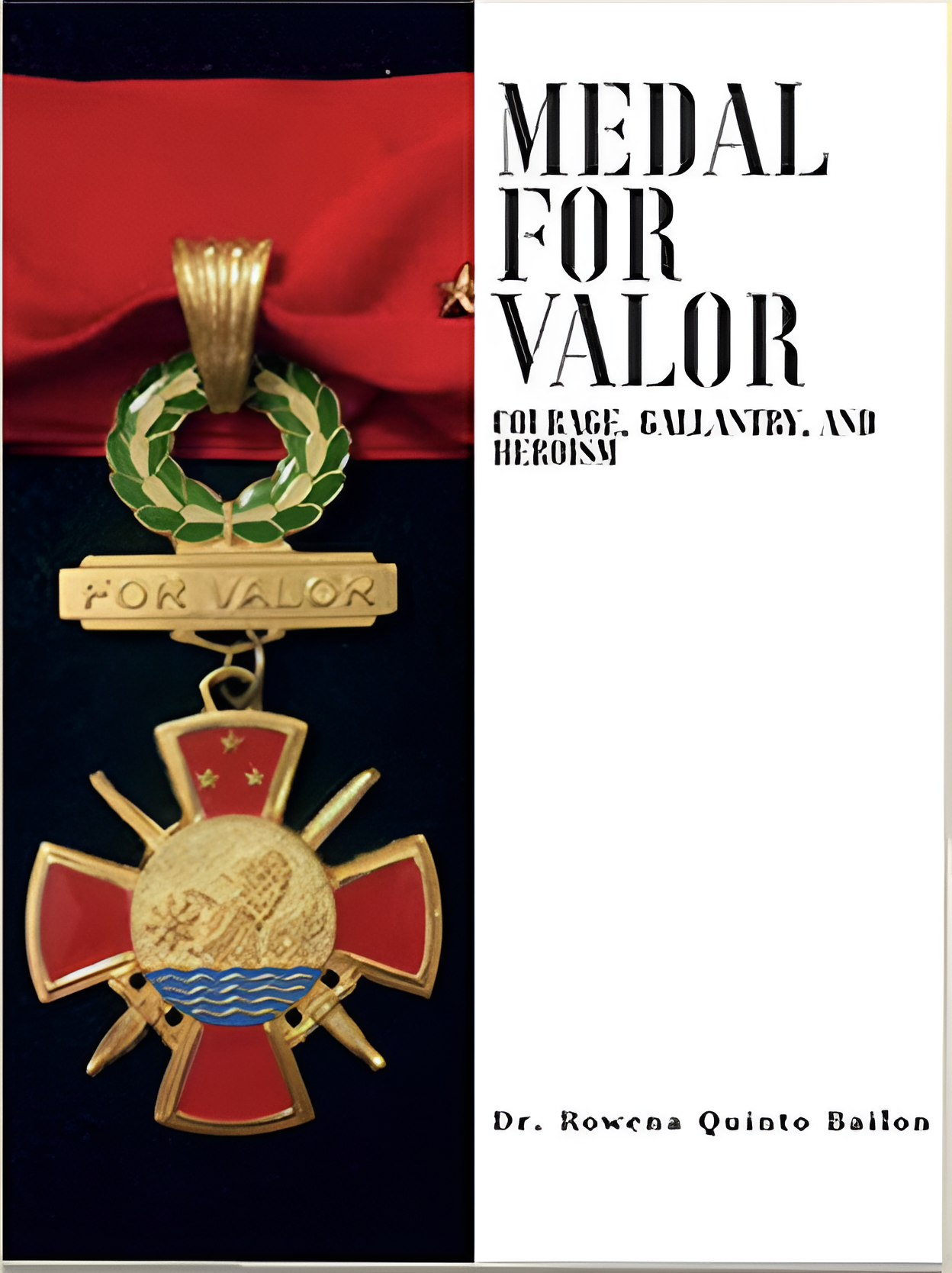
Medal for Valor: Courage, Gallantry, and Heroism
To honor the heroic soldiers who have sworn to defend the land, nation, and the people, the government presents awards and decorations in return for recognizing and giving importance to the act of courage, gallantry, and intrepidity beyond and above the call of duty of any enlisted personnel. The book Medal of Valor: Courage, Gallantry, and Heroism presents a sketch of the heroic act of service of the 42 Officers and Enlisted men who have shown that honesty and integrity together with bravery are very important parts of the service to the country. The book aims to share the story of the heroic act of the awardees in performing their duty. The retelling of the stories of these men aims to encourage the younger generation to recognize the importance of being truthful to the service of the nation and the people.
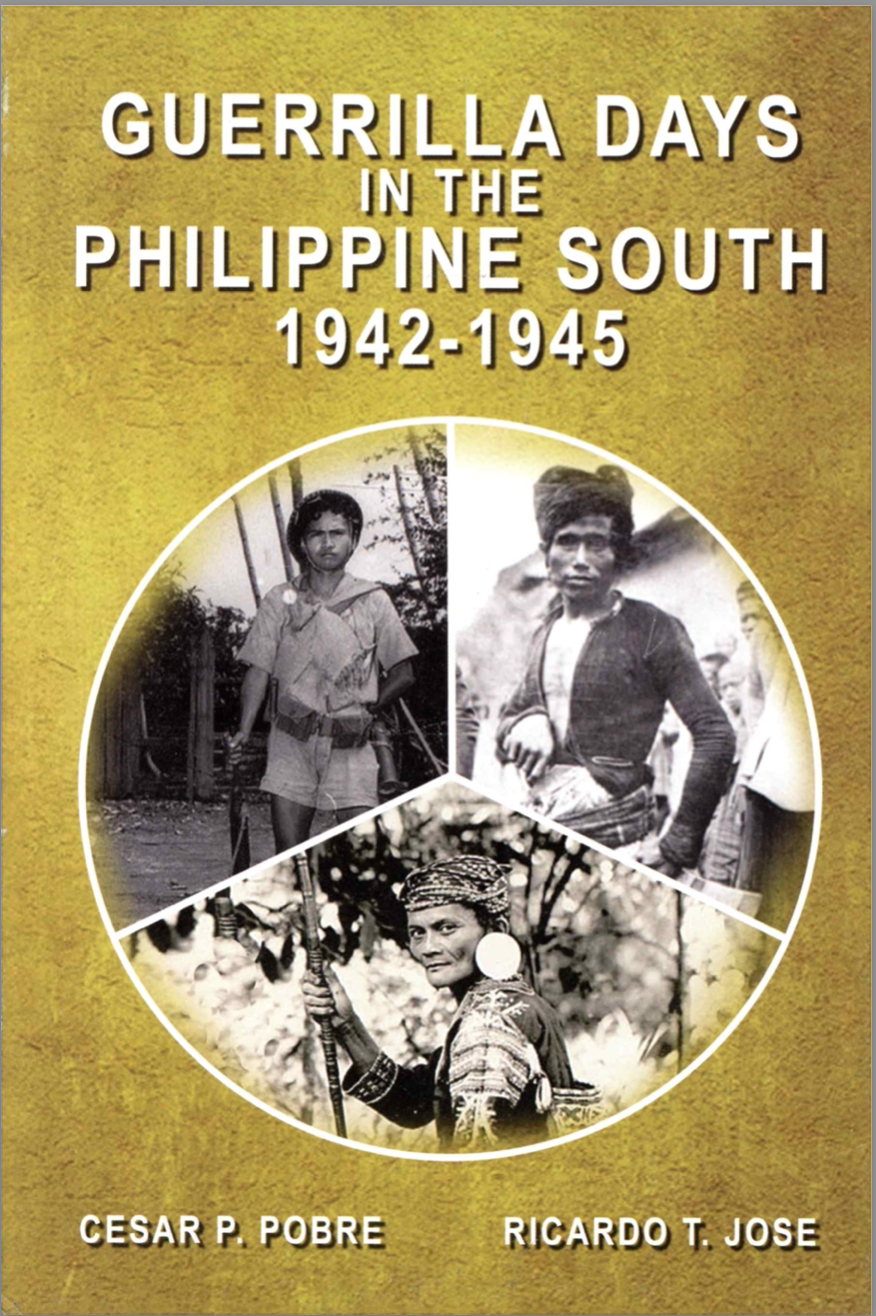
Guerrilla Days in the Philippine South 1942-1945
The first comprehensive account of the Filipino and American guerrilla resistance movement in Mindanao and Sulu during the Second World War. Utilizing heretofore untapped Philippine, American and Japanese primary sources, the book details heroism during the defense of Mindanao and Sulu during the Japanese invasion, the spontaneous development of anti-Japanese resistance groups including Christian, Muslim and indigenous Filipinos, the consolidation of these resistance groups into the Tenth Military District and the Sulu Area Command, and the key role these guerrillas played in the liberation of the area from Japanese rule. This is the first time a Filipino perspective is used to examine the largely unknown campaigns in the Philippine South.
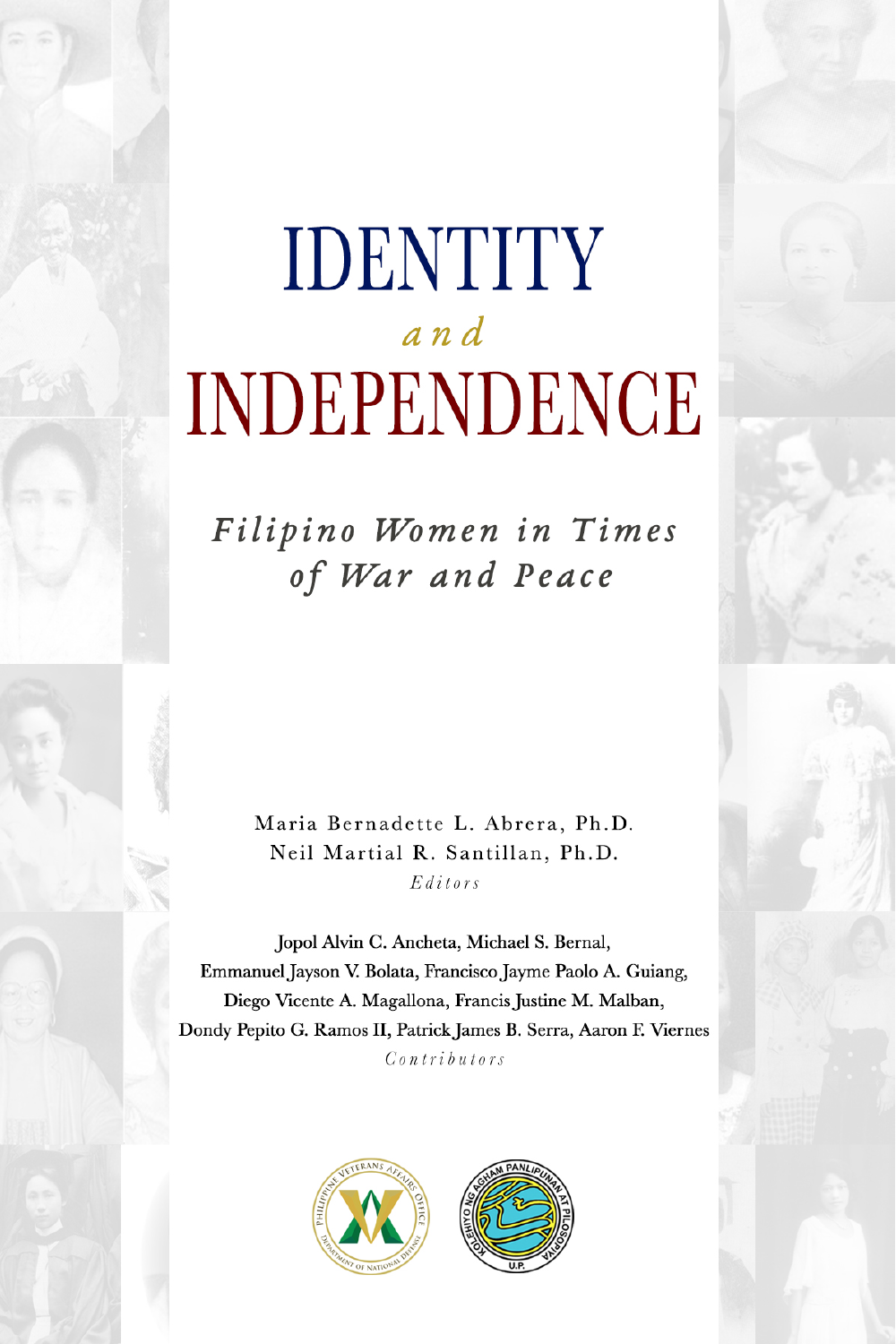
Identity and Independence: Filipino Women in Times of War and Peace
Santillan, Neil Martial R.,
Emmanuel Jayson V. Bolata,
Francisco Jayme Paolo A. Guiang,
Magallona, Diego Vicente A.,
Francis Justine M. Malban,
Dondy Pepito G. Ramos II,
Aaron F. Viernes,
Patrick James B. Serra,
This publication highlights the lives of women across three periods of our history when the country was faced with foreign colonizers, the Spanish, American and Japanese periods. The Spanish colonial period being the longest, the context of the heroic action needed to be carefully laid out to show how the actions of the women gave tremendous service to other Filipinos. The struggle for identity and independence continued into the American period thus showing how women continued to blaze new trails for themselves and for other Filipinos in various fields. The selection of women featured here on the brief Japanese occupation highlighted primarily their role in the country's return to freedom.

Hindi Lang Basta Bata: Mga Pananaliksik at Panunuri sa Kasaysayan at Panitikang Pambata
Sa kabila ng mga pagbabagong panlipunan, nananatiling pinagkakaitan ng karapatan ang maraming bata sa Pilipinas. Bagama’t kung lilinangi’y may sariling gahum, humaharap ang maraming bata sa malalalim at sala-salabat na depribasyon at vulnerabilidad na sagabal sa kanilang pakikilahok at pag-unlad. Isa sa mga dahilan nito ang kaayusang panlipunang hindi nagbibigay-tinig sa mga bata. Mistulang humahamon sa kayariang panlipunang ito ang napakahalagang libro ni EJ Bolata na nagtatanghal sa mga bata sa kasaysayan at panitikang Pilipino. Sapagkat may kaalaman ukol sa at kamalayan para sa mga bata, mabisang kasangkapan ang libro sa pagpapalitaw sa gahum ng mga bata sa lipunang Pilipino. Patunay ang librong hindi lang basta bata ang mga bata.
Despite the social changes, many Filipino children remain to be disenfranchised of their rights. Although if to be developed they shall have their own power, many children still face the multi-layered and intertwined forms of deprivation and vulnerability that hinder their participation and progress. One of the causes is the social order that silences the children. This important work of EJ Bolata seems to challenge this social structure, by recentering the children in the fields of Philippine history and literature. Due to the knowledge on and consciousness for the children, the book serves as a useful tool to reveal the power of children in Filipino society. The book manifests that children are not merely children.
Despite the social changes, many Filipino children remain to be disenfranchised of their rights. Although if to be developed they shall have their own power, many children still face the multi-layered and intertwined forms of deprivation and vulnerability that hinder their participation and progress. One of the causes is the social order that silences the children. This important work of EJ Bolata seems to challenge this social structure, by recentering the children in the fields of Philippine history and literature. Due to the knowledge on and consciousness for the children, the book serves as a useful tool to reveal the power of children in Filipino society. The book manifests that children are not merely children.
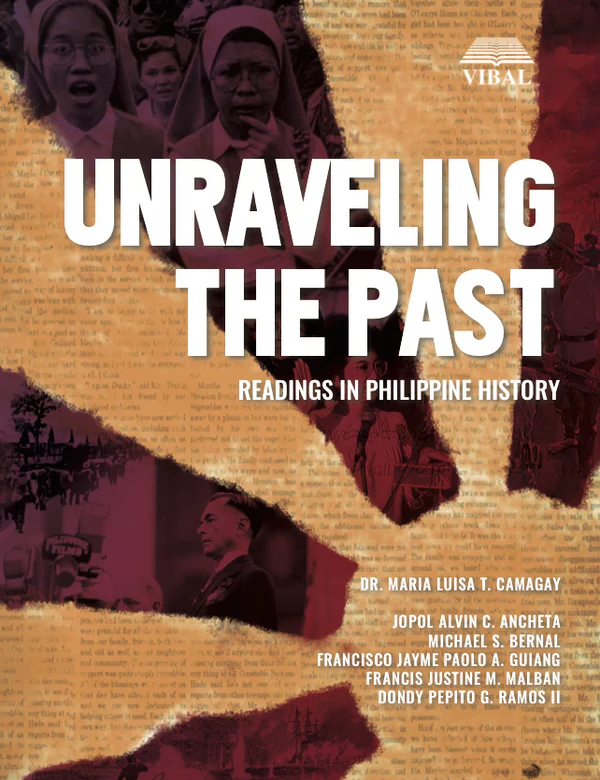
Unraveling the Past: Readings in Philippine History
Ma. Luisa T. Camagay, Ph.D.,
Francisco Jayme Paolo A. Guiang,
Francis Justine M. Malban,
Dondy Pepito G. Ramos II,
Unraveling the Past: Readings in Philippine History © 2018 provides a glimpse of Philippine history through a selection of primary sources produced by the individuals and institutions that witnessed or took part in shaping the past. This volume includes documents and materials relating to different events from vital historical periods beginning with the early Philippine society of the precolonial times, the occurrence and termination of Spanish colonization, the struggle for sovereignty under the American and Japanese occupations, the multifaceted challenges faced by postwar administrations, up to the contemporary times which cover the Martial Law years. The book also incorporates sources that tackle important issues concerning agrarian reform, economic nationalism, independent foreign policy, national minorities, and the Philippine constitutions. This creates an opportunity for a deeper understanding of the complex past by reading materials which tackle the different aspects of history related to Philippine politics, economics, culture, society, and religion.
| Title | Faculty Involved | Year |
|---|---|---|
| The Filipino worldview through art, images, and objects. From indigenous cultures to the 19th century | Ruel V. Pagunsan, Ph.D., Kristyl N. Obispado, Ph.D. | 2025 |
| Marcos Lies (Revised Edition) | Larah Vinda B. Del Mundo | 2025 |
| More Pinay Than We Admit 2: The Filipina Emerges from the Margins | Ma. Luisa T. Camagay, Ph.D. | 2025 |
| Dictionary of Philippine Mythology (Diccionario Mitológico de Filipinas) | Maria Bernadette L. Abrera, Ph.D. | 2025 |
| A Visual Guide to Philippine Ancient History | Vicente C. Villan, Ph.D. | 2025 |
| 1521 Revisited: The Quincentennial Commemorations in the Philippines, Volume 4 | Ian Christopher B. Alfonso, Ph.D. | 2025 |
| Traditional Medicine in the Colonial Philippines, 16th to the 19th Century, Revised Edition (2024) | Ma. Mercedes G. Planta, Ph.D. | 2025 |
| Essential Truths Series: Martial Law Era | Kristoffer R. Esquejo, Ph.D., Karl Friedrik K. Poblador, Ph.D., Janet S. Reguindin-Estella, Ph.D. | 2025 |
| Munting Aklat ng Baybayin | Ian Christopher B. Alfonso, Ph.D. | 2024 |
| Ilaya-Ilawod: Ang Bayan sa Harap ng Hamon ng Kolonisasyon | Janet S. Reguindin-Estella, Ph.D. | 2024 |
| AGOS: Currents of Faith in the Diocese of Kalookan | Kerby C. Alvarez, Ph.D. | 2024 |
| Pioneering Women’s Health: University of the Philippines – Philippine General Hospital Department of Obstetrics and Gynecology, 1900s-Present. | Ma. Mercedes G. Planta, Ph.D. | 2024 |
| Mga Sasakyang Pandagat ng Pilipinas - Picture Book | Maria Bernadette L. Abrera, Ph.D. | 2024 |
| Tahanan, Tanggulan, at TagpuanL Kasaysayang Pampook ng Bayan ng Looc | Kristoffer R. Esquejo, Ph.D. | 2024 |
| Kasaysayan Panlipunan ng Maynila, 1765-1898 | Ma. Luisa T. Camagay, Ph.D. | 2023 |
| Medal for Valor: Courage, Gallantry, and Heroism | Rowena Quinto-Bailon, Ph.D. | 2022 |
| Guerrilla Days in the Philippine South 1942-1945 | Ricardo T. Jose, Ph.D. | 2022 |
| Identity and Independence: Filipino Women in Times of War and Peace | Santillan, Neil Martial R., Emmanuel Jayson V. Bolata, Francisco Jayme Paolo A. Guiang, Magallona, Diego Vicente A., Francis Justine M. Malban, Dondy Pepito G. Ramos II, Aaron F. Viernes, Patrick James B. Serra | 2022 |
| Hindi Lang Basta Bata: Mga Pananaliksik at Panunuri sa Kasaysayan at Panitikang Pambata | Emmanuel Jayson V. Bolata | 2020 |
| Unraveling the Past: Readings in Philippine History | Ma. Luisa T. Camagay, Ph.D., Francisco Jayme Paolo A. Guiang, Francis Justine M. Malban, Dondy Pepito G. Ramos II | 2018 |
| Traditional Medicine in the Colonial Philippines: 16th to the 19th Century. Quezon City, Philippines: University of the Philippines Press. | Ma. Mercedes G. Planta, Ph.D. | 2017 |

